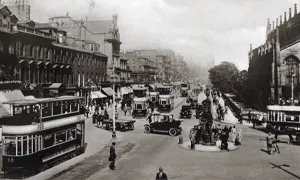
Featured Articles
Read about our newest Record Set releases and how they could help further your research, get inspired by our historical articles which show how famous ancestors such as Florence Nightingale, the Brontë sisters or Charles Darwin can be traced online, or enjoy fascinating discoveries about well-known celebrities in our Who Do You Think You Are section.
Who Do You Think You Are?
Every year the popular BBC series Who Do You Think You Are? brings us a host of new and exciting stories. We have taken a look at each celebrity as they journey into their family history, and you can read about their discoveries in our articles.
Latest Articles
Our Most Popular Articles
All articles are Copyright © of the author and TheGenealogist. These may not be reproduced in whole or part without prior permission.





















